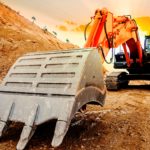Grand Challenge
The Hydrometallurgy Group (Hydromet Group) exists to address an increasing demand for metals recovered from ores and concentrates. As human demand for metals increases, global ore grades are simultaneously declining and problematic impurity contents in process feeds (arsenic and mercury, for example) are increasing. It is becoming significantly more important to be able to extract resources from lower grade ores in an economically viable and environmentally sustainable manner.
The Hydromet Group at UBC has a historical precedent for developing the next generation of industrially relevant hydrometallurgical processes
1951
Sherritt process for nickel and cobalt sulphide pressure leaching
This technology was developed as an alternative to smelting for the Lyn Lake, Manitoba deposit by Dr. Frank Forward in collaboration with Sherritt Gordon Mines Ltd. It was the first commercial application of pressure leaching for nickel sulphide concentrates. The process provided for pure nickel and cobalt separation as final products. The process was patented in 1951 (U.S. Patent 2,576,314).
1955-1962
Uranium hydrometallurgy, the Beaverlodge process
Dr. Frank Forward and Dr. Ian Warren along with Dr. Jack Halpern of the National Research Council of Canada (NRC) and the Eldorado Mining and Refining Ltd. developed several leaching and separation technologies. This research led to the “basic leach” process implemented at Beaverlodge, Saskatchewan. Several patents were granted for uranium hydrometallurgy including U.S. Patents 2,727,806; 2,797,977 and 3,042,486.
1993
Bismuth and antimony removal from copper refining solutions
Dr. David Dreisinger and Noranda invented technology for the purification of concentrated sulphuric acid solutions, in particular copper refinery electrolyte, by selectively removing antimony and bismuth ions from the solution through adsorption on a solid ion exchange resin (U.S. Patent 5,366,715).

1998
Flash Letdown Nozzle
Dr. David Dixon in collaboration with Barrick Gold Corporation developed technology that remains the industry standard device for pressure letdown from high pressure leaching tanks. This technology has significantly reduced maintenance problems in autoclaves (U.S. Patent 6,110,255).
1999
Anglo American/UBC process
Dr. David Dreisinger in collaboration with Anglo American Corporation developed a copper sulphide mineral concentrate leaching process in autoclaves at a temperature of 150°C (U.S. Patent 6,503,293).
2003
Sepon Process
Dr. David Dreisinger in collaboration with Oxiana Ltd. (now OZ Minerals) developed a method to extract copper with invention around the regeneration of oxidants required for the process. This process has been commercially applied at the Sepon mine since 2003 (U.S. Patent 7,799,295).
2010
SALT Process
Dr. Dreisinger in collaboration with Search Minerals created the Starved Acid Leach Technology (SALT) for extraction of nickel from laterite-type ores (U.S. Patent 8,361,191).
2012
Incor Lead Process
Dr. Dreisinger in collaboration with BASF developed new leaching technology for the extraction and recovery of lead from oxide ores. The Incor Lead Process was piloted in Australia in 2017 (U.S. Patent 14,076,564)
2016
Severe Service ORP Probe
Dr. Edouard Asselin in collaboration with Barrick Gold Corporation developed an ORP Probe for use in severe service environments such as high pressure leaching autoclaves ultimately allowing for improved process optimization (Patent Pending).

1961
Zinc pressure leach process
Developed by Dr. Frank Forward and Dr. Herbert Veltman in collaboration with Sherritt Gordon Mines Ltd. (U.S. Patent 2,996,440) in the late 1950s, this process led to one of two industry standard methods for extracting zinc from zinc sulphide concentrates through pressure leaching. It is a commercial alternative to the roast-leach electrowin process.
1973
UBC/Cominco copper chloride leach
This process was invented by Dr. Ernie Peters and COMINCO Ltd. (now TECK) to extract copper and iron from copper sulphide concentrates in an acidic chloride solution. It is one of the first examples of chloride hydrometallurgy. (Canadian Patent 938,793).
1996
Boleo Process
Dr. David Dreisinger and International Curator Resources Ltd. developed a process for the hydrometallurgical extraction of copper, zinc and cobalt from ores containing manganese dioxide. This was applied at the El Boleo mine (Patent Application WO1998014623A1).
1996
Fenix technology
Dr. Dreisinger and Eichrom Industries developed technology and applied it in Australia for the purification of copper solutions and to remove iron (U.S. Patent 5,582,737).
1998
Mt. Gordon (Australia) process for copper leaching
Dr. Dreisinger in collaboration with Western Metals Copper Ltd. developed technology that was commercially deployed for copper extraction from sulphide ores (U.S. Patent 6,537,440).
1999
PLATSOL Process
Dr. Dreisinger in collaboration with International PGM Technologies developed the PLATSOLTM Process which is a method to extract platinum group metals from sulphide concentrates in an autoclave using chlorides. This was developed for the POLYMET project in Minnesota (U.S. Patent 6,315,812).

2004-2012
Galvanox
Dr. Dixon has created a suite of technologies (GalvanoxTM) that extract copper from sulphide concentrates at atmospheric pressure. Solid catalysts such as pyrite (FeS2) or activated carbon are used depending on the sulphide mineral that is targeted (U.S. Patent 8,277,539).
2015
JETTI Process
Dr. David Dixon and Dr. Edouard Asselin served as Scientific Advisors for Jetti Resources and developed a process to address the need for a cost-effective and commercially practical heap leach technology for primary copper sulphide ores (Canadian Patent CA2973612C).